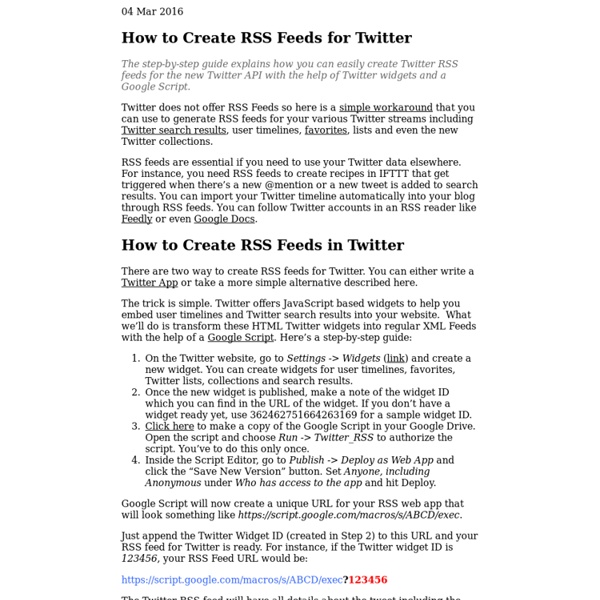



x10Hosting - Free Web Hosting for the Masses How to Get RSS Feeds for Twitter Scraping software, services and plugins sum up Since we have already reviewed classic web harvesting software, we want to sum up some other scraping services and crawlers, scrape plugins and other scrape related tools. Web scraping is a sphere that can be applied to a vast variety of fields, and in turn it can require other technologies to be involved. SEO needs scrape. Proxying is one of the methods which can help you to stay masked while doing much web data extraction. Crawling is another sub-technology indispensable in scrape for unordered information sources. Web Scraping directory (classified by function) Fast Scrape Often I need to get something fast from the screen into my pocket. Scraper, the Google Chrome extension is what makes my life easy. ) and have this tool always embedded in the right-button menu. Scrape services and tools Among the scrape services we take note of: Grepsr scraping service. Anti-scrape service Crawling tools Scrape plugins Need to acquire some fluctuating data to insert into your Word Press driven web page?
flickrRSS for WordPress — Eightface This WordPress plugin allows you to display Flickr photos on your weblog. It supports user, set, favorite, group and community photostreams, and is relatively easy to setup and configure via a settings panel. The plugin also has cache support, allowing you to save thumbnails on your own server. Download flickrRSS from WordPress.org Installation Put the flickrRSS files into your plugins directory.Activate the plugin.Configure your options under the Settings tab.To use an image cache, create a writable directory and specify its location in the settings.Add <? Support & Questions At the moment, I’m not using the plugin and don’t have the time to support it. Want to work on the plugin? If you want to improve things, I’ve dropped the code on github, so you can fork it and have a go.
How To Create A Twitter RSS Feed - New Version Since API Switch Off Issuu - You Publish